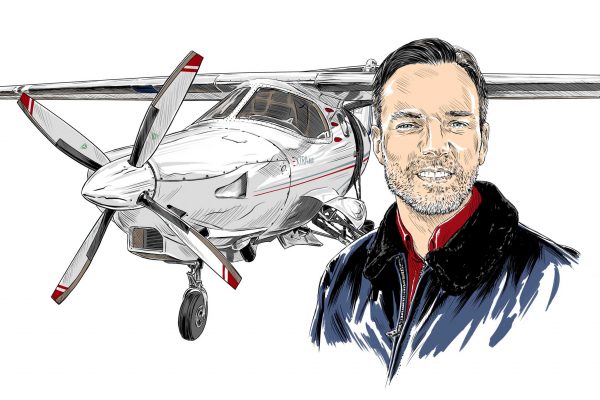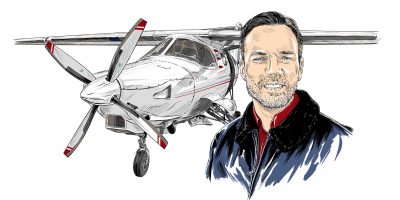Just as regulations come and sometimes go, we also see an evolution in the technical language used in aviation to describe ways of doing or thinking about things. Something heard more in the GA context than previously is ‘threat and error management’ (TEM). Although TEM entered the PPL syllabus some years ago, it may not be familiar to those who learned to fly prior to its introduction.
As we start flying more often, I think TEM is worth some thought. Forgive me in advance, in the space available I will stick largely to the theory and leave it somewhat to the readers’ imagination about how it should be practically applied, although I might try and pick this up next month.
The phrase ‘TEM’ first emerged in the 1990s as part of the increasing emphasis on human factors in airline safety. Essentially the idea is that on every flight there will likely be threats to its safe completion, such as weather or airspace hazards, and there is also the possibility that we will make errors that could impact safety. TEM is about thinking of those potential threats and errors and considering how to mitigate them.
“… TEM is applicable to GA because it recognises that we cannot rely purely on a skill and rules-based system for safe outcomes.”
Some ideas from the airline world translate better than others, but I think TEM is applicable to GA because it recognises that we cannot rely purely on a skill and rules-based system for safe outcomes.
Now, you may be wondering whether it is necessary to have such a term when most pilots probably already know that judgement, experience and what we often call ‘airmanship’ also come into it. But how do pilots get to the point of consistently exercising good judgement and airmanship?
Human factors…
Experience is obviously important, but it was recognised long ago that better human factors training is essential for improving safety and in particular the reduction in accidents caused by poor judgement or assessment of risk.
To impart that training more effectively it is useful to have concepts, TEM being one of them. I would not characterise TEM as a ‘new’ way of thinking about safety in our flying, but a more precise way of describing it, which in theory should make it easier to teach.
I have heard TEM likened to ‘defensive driving’. Most pilots when they go flying comply with the rules-based requirements, such as whether their rating is valid and then think about relevant issues such as weather or airspace hazards. Probably a sort of threat assessment is already being done. By specifically thinking of factors, such as a complex aerodrome join or time pressure to depart before the aerodrome closes, as threats, encourages us to think more specifically about how they impact our flight and how to best mitigate or avoid them.
Going through the flight from start to finish is helpful and as you develop a mental model of it you will likely think of more issues to consider. Managing threats is mostly about anticipation and planning.
There are so many potential threats and errors in GA flying that it is not practical to teach the correct response to every conceivable one, which is why it is more about encouraging pilots to think about relevant threats and errors when they go flying, rather than trying to tell them what they should or should not do.
The ‘error’ part of TEM is about recognising that errors will occur and that if we have strategies for mitigating them, that will eliminate a lot of the associated risk. The full breakdown of different types of error within TEM theory is quite extensive and beyond the space available, but a few thoughts stand out for me:
Humans often make errors because our application of knowledge and procedure is not robotic – it is simply how we are built and now and again errors such as forgetting to set the QNH or raising the landing gear on the runway when we meant to raise the flaps will happen.
Systematic approaches
With training and practice we can become more consistent, but we need aids such as checklists and systematic approaches to executing tasks. This goes a long way to reducing errors and I would encourage pilots to think of how they could better deploy those aids to reduce basic procedural errors.
Accidents or incidents often occur when unanticipated threats germinate on a flight and increase operational complexity such that the pilot makes errors.
Doing the wrong action or forgetting something can be random, but typically they are brought on by external factors that might force us out of an intended sequence of doing things or distract us from something we would otherwise have reliably done. Such things might be an unexpected ATC instruction or the weather conditions suddenly diverging from the forecast. Often several threats become factors at once.
Our propensity to make errors in circumstances of unanticipated pressure and complexity increases.
Knowledge and proficiency will increase our resilience, but everyone has a limit after which we become saturated or fixated and errors start. For example, we might stop monitoring the flight path or information inputs such as warnings of high ground or airspace might no longer register in the brain.
But such situations could often be avoided if the threats (and resultant errors) had been anticipated before the flight and we had decided how to manage or avoid them.
It is hardly revolutionary thinking, but I quite like how TEM can bring the two together.




